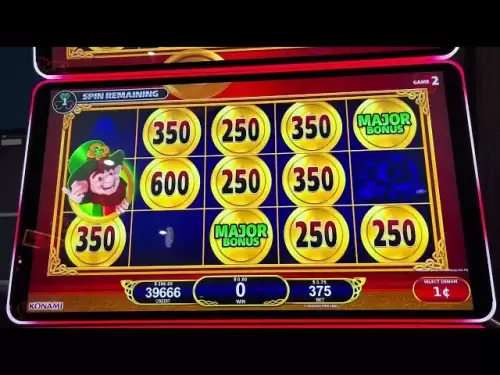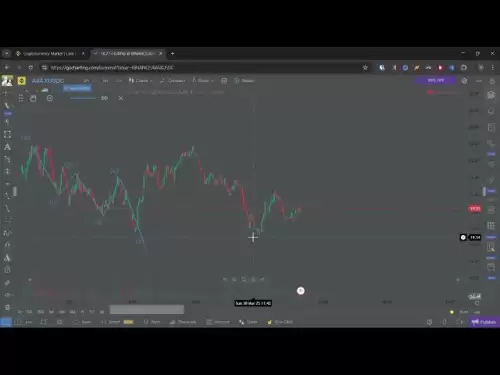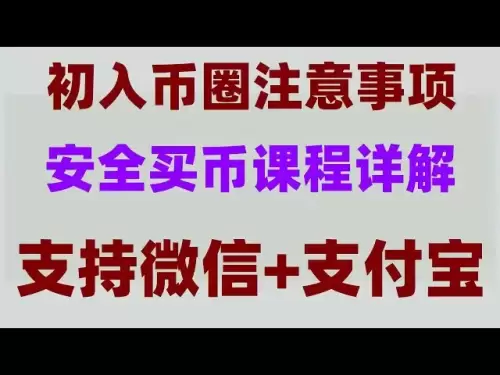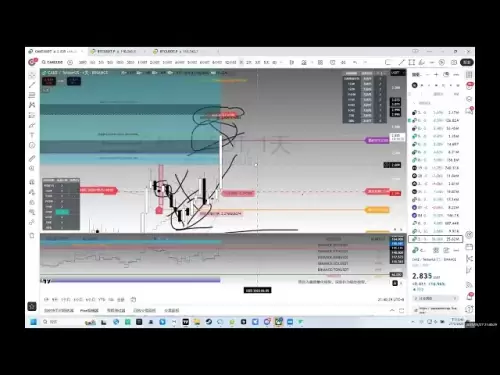-
 Bitcoin
Bitcoin $110,401.8795
1.10% -
 Ethereum
Ethereum $2,702.7130
6.50% -
 Tether USDt
Tether USDt $1.0001
-0.01% -
 XRP
XRP $2.3443
1.76% -
 BNB
BNB $691.5299
2.74% -
 Solana
Solana $178.8132
2.50% -
 USDC
USDC $0.9999
0.00% -
 Dogecoin
Dogecoin $0.2296
2.61% -
 Cardano
Cardano $0.7719
2.31% -
 TRON
TRON $0.2756
1.43% -
 Hyperliquid
Hyperliquid $37.5692
1.38% -
 Sui
Sui $3.6873
6.07% -
 Chainlink
Chainlink $16.0457
3.59% -
 Avalanche
Avalanche $23.7281
2.75% -
 Stellar
Stellar $0.2905
2.28% -
 Shiba Inu
Shiba Inu $0.0...01461
2.60% -
 Bitcoin Cash
Bitcoin Cash $420.6428
1.53% -
 UNUS SED LEO
UNUS SED LEO $8.8911
-3.26% -
 Hedera
Hedera $0.1911
3.06% -
 Toncoin
Toncoin $3.0204
2.38% -
 Litecoin
Litecoin $96.7576
2.14% -
 Polkadot
Polkadot $4.5947
3.17% -
 Monero
Monero $385.9955
-4.23% -
 Bitget Token
Bitget Token $5.3818
1.51% -
 Pepe
Pepe $0.0...01415
3.58% -
 Pi
Pi $0.7508
-2.74% -
 Dai
Dai $0.9997
-0.01% -
 Ethena USDe
Ethena USDe $1.0007
0.00% -
 Aave
Aave $277.9972
4.61% -
 Uniswap
Uniswap $6.5957
3.07%
How to combine DMI with gap theory? Is DMI effective when filling the gap?
DMI, with its +DI, -DI, and ADX, combined with gap theory, helps traders predict market trends and capitalize on price movements effectively.
May 26, 2025 at 10:56 pm
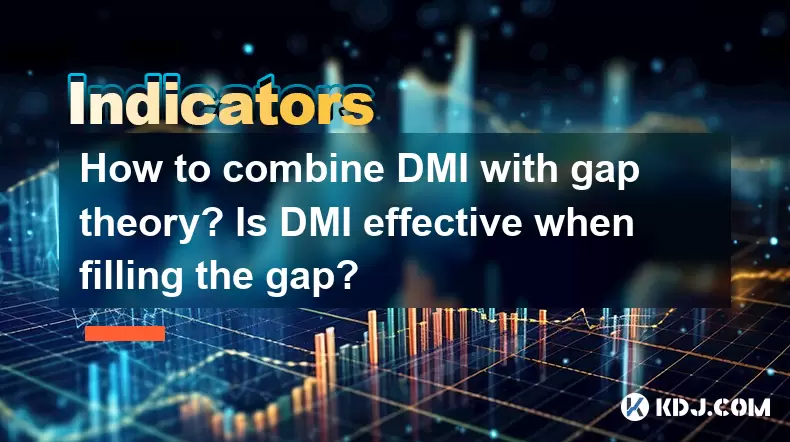
The combination of Directional Movement Index (DMI) with gap theory can offer traders a robust approach to understanding market trends and potential price movements. DMI, developed by J. Welles Wilder, is a technical indicator that helps determine the direction of a security's price movement, while gap theory focuses on price gaps that occur when a security opens significantly higher or lower than its previous close. Integrating these two concepts can enhance a trader's ability to predict and capitalize on market movements.
Understanding DMI and Its Components
DMI consists of three main components: the Positive Directional Indicator (+DI), the Negative Directional Indicator (-DI), and the Average Directional Index (ADX). The +DI measures the upward movement in price, the -DI measures the downward movement, and the ADX indicates the strength of the trend. When the +DI is above the -DI, it suggests a bullish trend, and when the -DI is above the +DI, it suggests a bearish trend. The ADX, when above 25, typically indicates a strong trend, while below 20 suggests a weak trend.
To use DMI effectively, traders should:
- Monitor the crossover of +DI and -DI to identify potential trend reversals.
- Watch the ADX to gauge the strength of the trend; a rising ADX confirms the trend's strength.
- Combine DMI with other indicators such as moving averages to confirm signals.
Understanding Gap Theory
Gap theory deals with price gaps, which are areas on a chart where the price of a security moves sharply up or down with no trading occurring in between. These gaps can be classified into four types: breakaway gaps, runaway gaps, exhaustion gaps, and common gaps. Each type of gap has different implications for market direction and trader strategy.
- Breakaway gaps often signal the start of a new trend.
- Runaway gaps occur within a trend and suggest that the trend will continue.
- Exhaustion gaps indicate that a trend is nearing its end.
- Common gaps are typically insignificant and fill quickly.
Combining DMI with Gap Theory
To combine DMI with gap theory effectively, traders should focus on the following steps:
- Identify the gap: Look for a significant gap in the price chart, whether it's an opening gap or a gap within the trading day.
- Analyze the DMI: Check the +DI and -DI lines to see if they confirm the direction suggested by the gap. For example, if there's a bullish gap, the +DI should be above the -DI.
- Evaluate the ADX: A high ADX value (>25) can confirm that the trend indicated by the gap is strong.
- Confirm with other indicators: Use additional technical indicators, such as volume or moving averages, to validate the signals from DMI and the gap.
Is DMI Effective When Filling the Gap?
The effectiveness of DMI when filling a gap depends on several factors, including the type of gap and the strength of the trend as indicated by the ADX. Here's how DMI can be used in different gap scenarios:
- Filling a Breakaway Gap: If a breakaway gap occurs and the ADX is rising, it suggests that the new trend is strong. DMI can help traders stay in the trade as the gap may not fill quickly. If the +DI remains above the -DI, it supports the bullish trend.
- Filling a Runaway Gap: Runaway gaps are less likely to fill quickly, and a high ADX with the +DI above the -DI can confirm that the trend will continue. DMI can help traders hold onto their positions.
- Filling an Exhaustion Gap: Exhaustion gaps are more likely to fill, and a declining ADX with the +DI crossing below the -DI can signal that the trend is weakening. DMI can help traders exit their positions before the gap fills.
- Filling a Common Gap: Common gaps are typically filled quickly, and DMI may not be as effective in predicting the fill. However, if the ADX is low and the +DI and -DI are close, it might suggest a lack of strong trend, supporting the likelihood of the gap filling.
Practical Application of DMI and Gap Theory
To apply DMI and gap theory in trading, consider the following steps:
- Monitor the market for gaps: Use charting tools to identify gaps in real-time or historical data.
- Apply DMI on the chart: Plot the +DI, -DI, and ADX lines on the price chart to analyze the trend direction and strength.
- Analyze the gap type: Determine whether the gap is a breakaway, runaway, exhaustion, or common gap based on its position and context within the trend.
- Make trading decisions: If the gap and DMI signals align, consider entering or exiting trades. For example, a bullish gap with a rising +DI and high ADX might prompt a long position, while a bearish gap with a falling -DI and high ADX might prompt a short position.
- Set stop-losses and take-profits: Use DMI to help set appropriate levels for stop-losses and take-profits based on the trend strength and direction.
Case Study: Using DMI and Gap Theory in Bitcoin Trading
Consider a scenario where Bitcoin (BTC) experiences a significant bullish gap at the opening of the trading day. Here's how to apply DMI and gap theory:
- Identify the gap: Notice a large gap up in the price of BTC from the previous day's close.
- Analyze the DMI: Check the +DI and -DI lines on the chart. If the +DI is above the -DI, it supports the bullish gap.
- Evaluate the ADX: If the ADX is rising and above 25, it confirms a strong bullish trend.
- Confirm with other indicators: Look at the volume to ensure it supports the bullish move, and check moving averages for additional confirmation.
- Make a trading decision: Enter a long position on BTC, expecting the bullish trend to continue.
- Set stop-losses and take-profits: Use the DMI to set stop-losses below key support levels and take-profits at resistance levels indicated by the trend strength.
Frequently Asked Questions
Q: Can DMI be used effectively with other technical indicators besides gap theory?
A: Yes, DMI can be effectively combined with various other technical indicators such as moving averages, RSI (Relative Strength Index), and MACD (Moving Average Convergence Divergence). These indicators can provide additional confirmation of trends and help traders make more informed decisions.
Q: How often do gaps fill in the cryptocurrency market?
A: The frequency of gap filling in the cryptocurrency market can vary widely depending on market conditions, the type of gap, and the overall trend. Common gaps tend to fill more frequently than breakaway or runaway gaps, but traders should always consider the broader market context and use technical analysis tools like DMI to assess the likelihood of a gap filling.
Q: Is it necessary to use a specific timeframe when applying DMI and gap theory?
A: The choice of timeframe depends on the trader's strategy and goals. Shorter timeframes like 15-minute or hourly charts can be used for day trading, while longer timeframes like daily or weekly charts are suitable for swing trading or long-term investing. DMI and gap theory can be applied effectively across various timeframes, but the signals and their reliability may differ.
Q: How can traders manage risk when using DMI and gap theory?
A: Risk management is crucial when trading with any strategy. Traders should set stop-loss orders based on key support and resistance levels identified by DMI. Additionally, they can use position sizing to ensure that no single trade can significantly impact their overall portfolio. Monitoring the ADX can also help traders adjust their risk levels according to the strength of the trend.
Disclaimer:info@kdj.com
The information provided is not trading advice. kdj.com does not assume any responsibility for any investments made based on the information provided in this article. Cryptocurrencies are highly volatile and it is highly recommended that you invest with caution after thorough research!
If you believe that the content used on this website infringes your copyright, please contact us immediately (info@kdj.com) and we will delete it promptly.
- $SEND to Be Listed on BitMart, a Premier Global Digital Asset Trading Platform
- 2025-05-28 02:15:13
- Neanderthal Fingerprint Found on 115000-Year-Old Pebble
- 2025-05-28 02:15:13
- Ethereum (ETH) Breaks Above $2,575 Resistance, Targeting the $2,650-$2,745 Range
- 2025-05-28 02:10:16
- DON (Salamanca) Meme Token Emerges as the Fastest-Growing Meme Bytes
- 2025-05-28 02:10:16
- XRP whales shift funds to Unilabs' booming presale, betting big on its AI-driven tech as assets top $30m and momentum builds.
- 2025-05-28 02:05:18
- Whales Accumulate PEPE as It Regains Bullish Momentum
- 2025-05-28 02:05:18
Related knowledge
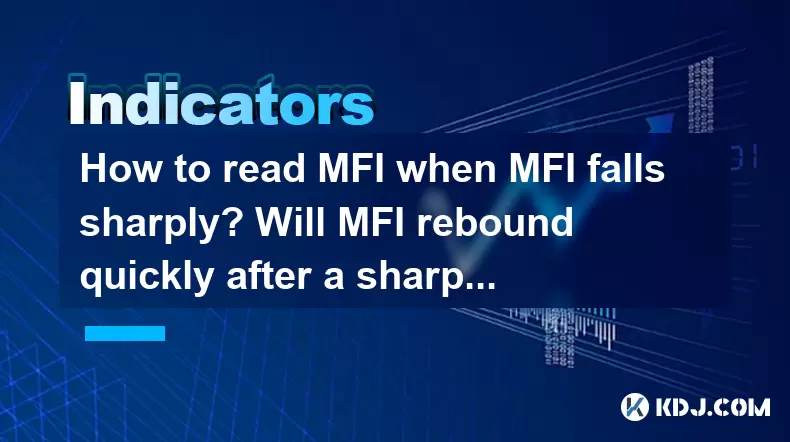
How to read MFI when MFI falls sharply? Will MFI rebound quickly after a sharp drop?
May 27,2025 at 12:01pm
Title: How to Transfer Bitcoin from Coinbase to Kraken Transferring Bitcoin from one exchange to another, such as from Coinbase to Kraken, is a common task for cryptocurrency enthusiasts. This process involves several steps, including withdrawing Bitcoin from Coinbase and depositing it into Kraken. Understanding how to do this safely and efficiently can...
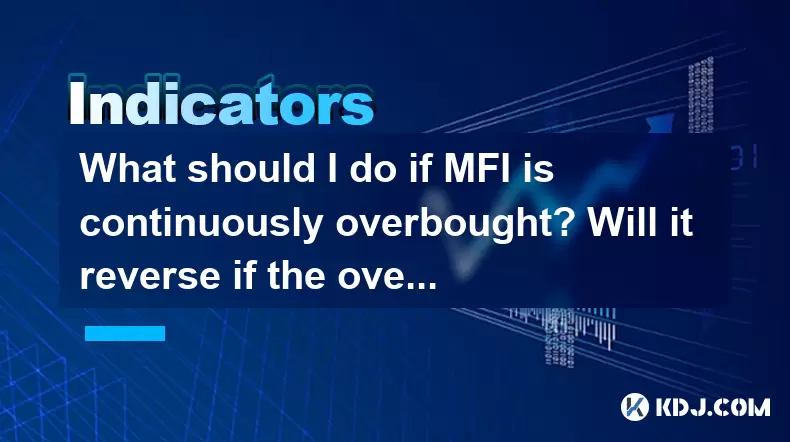
What should I do if MFI is continuously overbought? Will it reverse if the overbought lasts for a long time?
May 27,2025 at 11:21pm
When dealing with the Money Flow Index (MFI) in the cryptocurrency market, it's essential to understand its implications and how to navigate situations where the MFI remains continuously overbought. The MFI is a momentum indicator that measures the inflow and outflow of money into a security over a specific period. An MFI value above 80 typically indica...
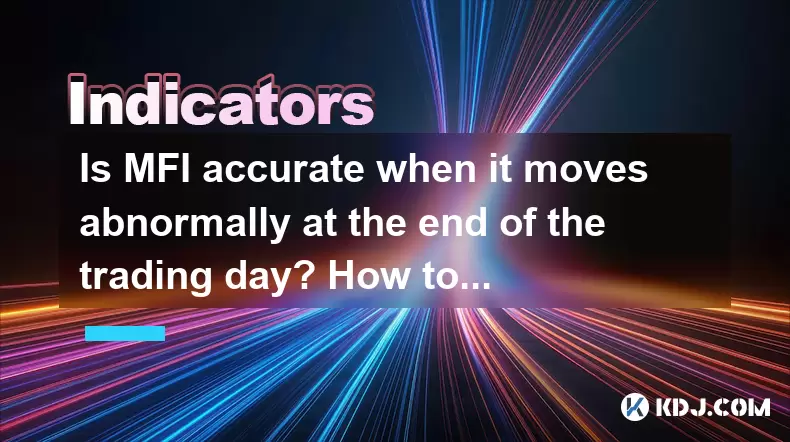
Is MFI accurate when it moves abnormally at the end of the trading day? How to interpret MFI when it rises at the end of the trading day?
May 27,2025 at 08:49pm
The Money Flow Index (MFI) is a popular technical indicator used by traders to assess the strength and sustainability of a price trend in the cryptocurrency market. It measures the inflow and outflow of money into a security over a specified period, often 14 days, and is commonly used to identify potential overbought or oversold conditions. However, the...

Is MFI accurate when the main force is washing the market? How to analyze MFI in the washing stage?
May 27,2025 at 05:56pm
Title: How to Secure Your Cryptocurrency Wallet: A Comprehensive Guide In the world of cryptocurrencies, securing your digital assets is paramount. Cryptocurrency wallets are the gateways to your digital funds, and ensuring their safety is crucial to prevent unauthorized access and potential loss. This comprehensive guide will walk you through various m...
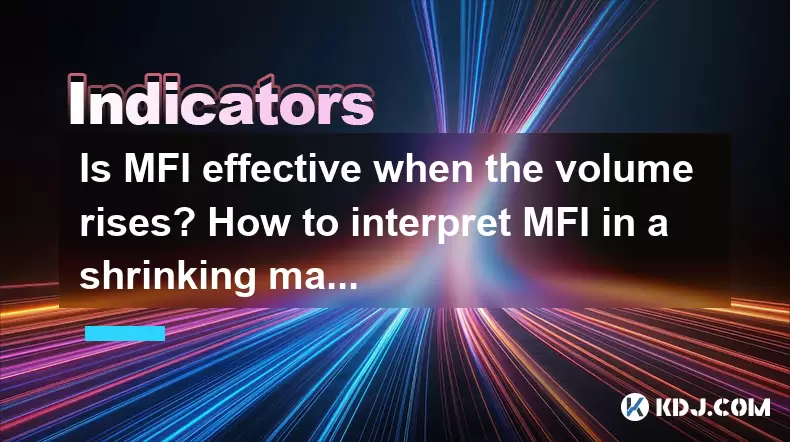
Is MFI effective when the volume rises? How to interpret MFI in a shrinking market?
May 27,2025 at 02:42am
The Money Flow Index (MFI) is a momentum indicator that measures the inflow and outflow of money into a security over a specific period. It is particularly useful in identifying overbought or oversold conditions in the market. In this article, we will explore the effectiveness of MFI when volume rises and how to interpret MFI in a shrinking market. Unde...
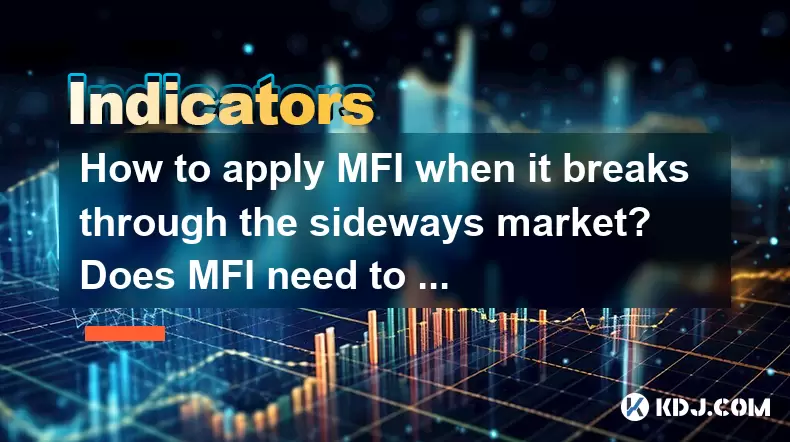
How to apply MFI when it breaks through the sideways market? Does MFI need to be combined with other indicators when it breaks through?
May 27,2025 at 09:08am
The Money Flow Index (MFI) is a momentum indicator that measures the inflow and outflow of money into a security over a specific period. When the MFI breaks through a sideways market, it can signal potential shifts in market sentiment and trading opportunities. Understanding how to apply MFI in such scenarios and whether it should be combined with other...

How to read MFI when MFI falls sharply? Will MFI rebound quickly after a sharp drop?
May 27,2025 at 12:01pm
Title: How to Transfer Bitcoin from Coinbase to Kraken Transferring Bitcoin from one exchange to another, such as from Coinbase to Kraken, is a common task for cryptocurrency enthusiasts. This process involves several steps, including withdrawing Bitcoin from Coinbase and depositing it into Kraken. Understanding how to do this safely and efficiently can...

What should I do if MFI is continuously overbought? Will it reverse if the overbought lasts for a long time?
May 27,2025 at 11:21pm
When dealing with the Money Flow Index (MFI) in the cryptocurrency market, it's essential to understand its implications and how to navigate situations where the MFI remains continuously overbought. The MFI is a momentum indicator that measures the inflow and outflow of money into a security over a specific period. An MFI value above 80 typically indica...

Is MFI accurate when it moves abnormally at the end of the trading day? How to interpret MFI when it rises at the end of the trading day?
May 27,2025 at 08:49pm
The Money Flow Index (MFI) is a popular technical indicator used by traders to assess the strength and sustainability of a price trend in the cryptocurrency market. It measures the inflow and outflow of money into a security over a specified period, often 14 days, and is commonly used to identify potential overbought or oversold conditions. However, the...

Is MFI accurate when the main force is washing the market? How to analyze MFI in the washing stage?
May 27,2025 at 05:56pm
Title: How to Secure Your Cryptocurrency Wallet: A Comprehensive Guide In the world of cryptocurrencies, securing your digital assets is paramount. Cryptocurrency wallets are the gateways to your digital funds, and ensuring their safety is crucial to prevent unauthorized access and potential loss. This comprehensive guide will walk you through various m...

Is MFI effective when the volume rises? How to interpret MFI in a shrinking market?
May 27,2025 at 02:42am
The Money Flow Index (MFI) is a momentum indicator that measures the inflow and outflow of money into a security over a specific period. It is particularly useful in identifying overbought or oversold conditions in the market. In this article, we will explore the effectiveness of MFI when volume rises and how to interpret MFI in a shrinking market. Unde...

How to apply MFI when it breaks through the sideways market? Does MFI need to be combined with other indicators when it breaks through?
May 27,2025 at 09:08am
The Money Flow Index (MFI) is a momentum indicator that measures the inflow and outflow of money into a security over a specific period. When the MFI breaks through a sideways market, it can signal potential shifts in market sentiment and trading opportunities. Understanding how to apply MFI in such scenarios and whether it should be combined with other...
See all articles





















